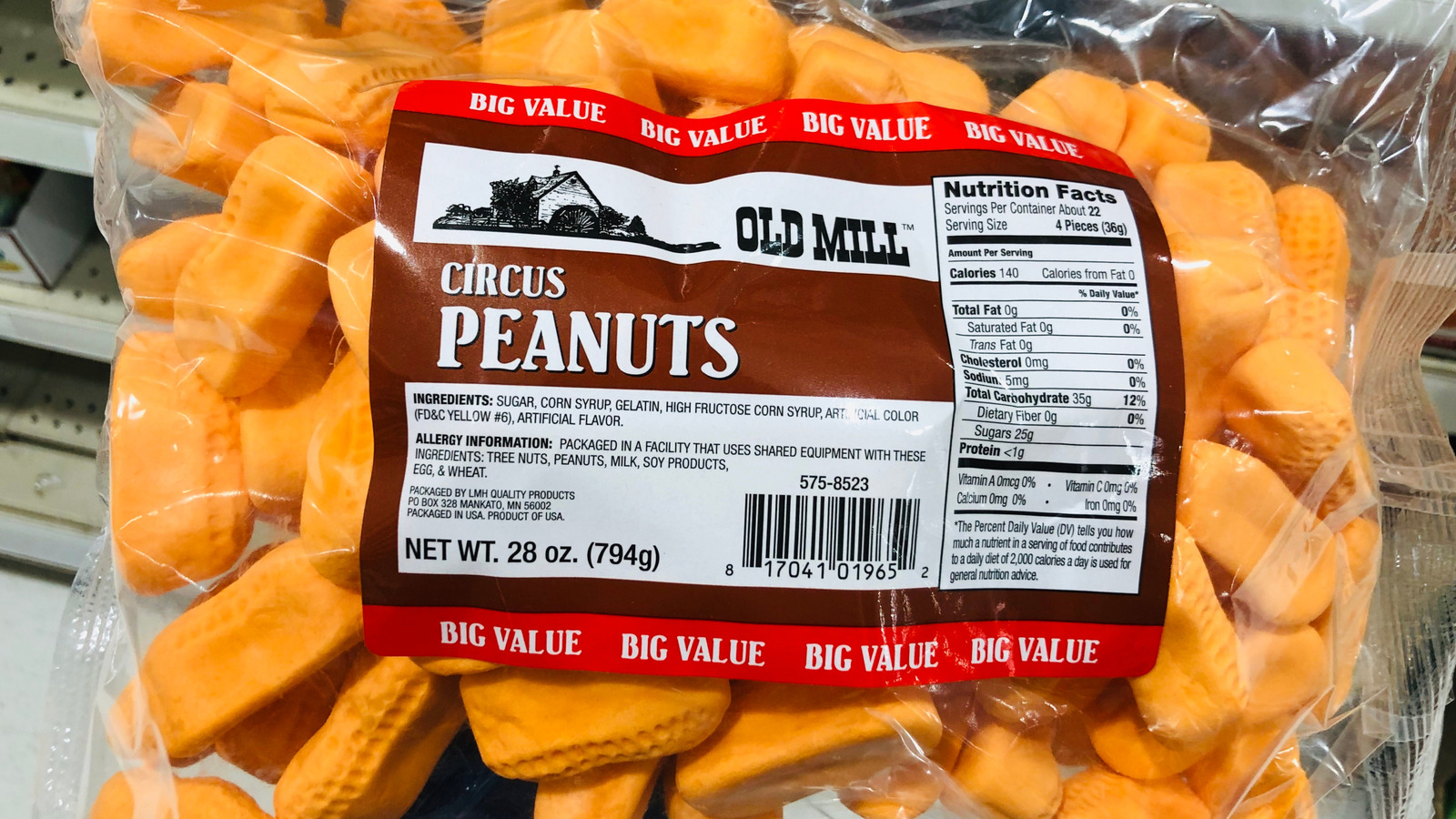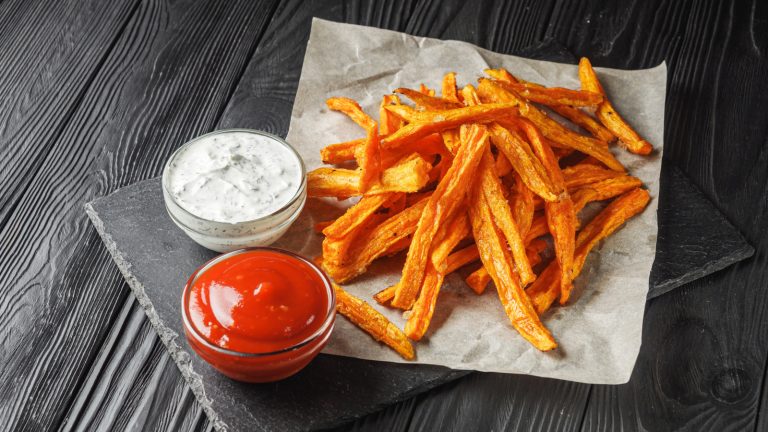We may receive a commission on purchases made from links.
From sorrily-discontinued candies that we’d love to bring back to vintage candy bars that no one remembers anymore, the world of retro sweets can be as enticing as it is enlightening (i.e. “I get why we left that one in the past”). However, one candy has lasted the test of time, whether or not folks actually still enjoy eating it: circus peanuts. Despite their seemingly-inexplicable orange hue and peanut name and shape, circus peanuts are supposed to taste like banana.
Circus peanut candy is made from a relatively simple ingredients list of sugar, corn syrup, gelatin, pectin, artificial flavor, and coloring. The candy’s signature artificial banana taste comes from a synthetic compound called isoamyl acetate, with the fruity tones sweetened by the corn syrup. With such a minimal lineup of ingredients, nailing this centuries-old combination comes down to specific cooking temperatures and techniques.
To make circus peanuts, the ingredients are mixed together, then poured into starch molds, which form that classic peanut shape and draw out moisture for an airy, marshmallowy texture. Those molds are placed in temperature-controlled rooms, where the candy firms up over a period of hours. As celebrity foodie Andrew Zimmern explains in his “Field Guide to Exceptionally Weird, Wild, and Wonderful Foods” (2012), “According to sources from Spangler, one of the only companies still making Circus Peanuts, this candy is one of the most difficult to make. They need the perfect conditions to have the correct consistency — too much moisture creates a thin, crusty deposit; too little and the peanut will cave inward.”
Circus peanut candy is supposed to taste like banana, but no one’s exactly sure why
A backward glance at the history of circus peanut candy doesn’t clear up much about the inspiration behind that curious banana flavor. The marshmallow-meets-taffy candy has been around since the 1800s — predating the Spangler candy company itself, which was established in 1906. That puffy, squishy peanut shape would have been easy to mass-produce using a candy mold during the early days of Industrialization, when candy-making with a machine was still relatively new; meanwhile, the popularity of the circus was dominating American leisure time in the late-1800s. These spongy proto-“penny candies” of yore remained popular until around the 1960s, but it remains unclear who originally invented circus peanut candies, why they’re banana-flavored, or exactly when they first hit the scene.
Whatever the origin, this notoriously divisive candy (at least nowadays) likely has more sweet-toothed foodies on the “nay” side. Today, circus peanuts are arguably more about nostalgia and piety to Americana than about how pleasurable the actual candy is (or isn’t) to eat — especially when Sour Patch Kids are, like, right there. Although, as of 2006, Spangler was still making roughly 32,000 pounds of circus peanuts per day. Circus peanuts can still be found via retailers from Melster Candies to Tractor Supply Co, and at old-school retro candy shops far and wide between the NECCO wafers and the Bazooka bubble gum.






